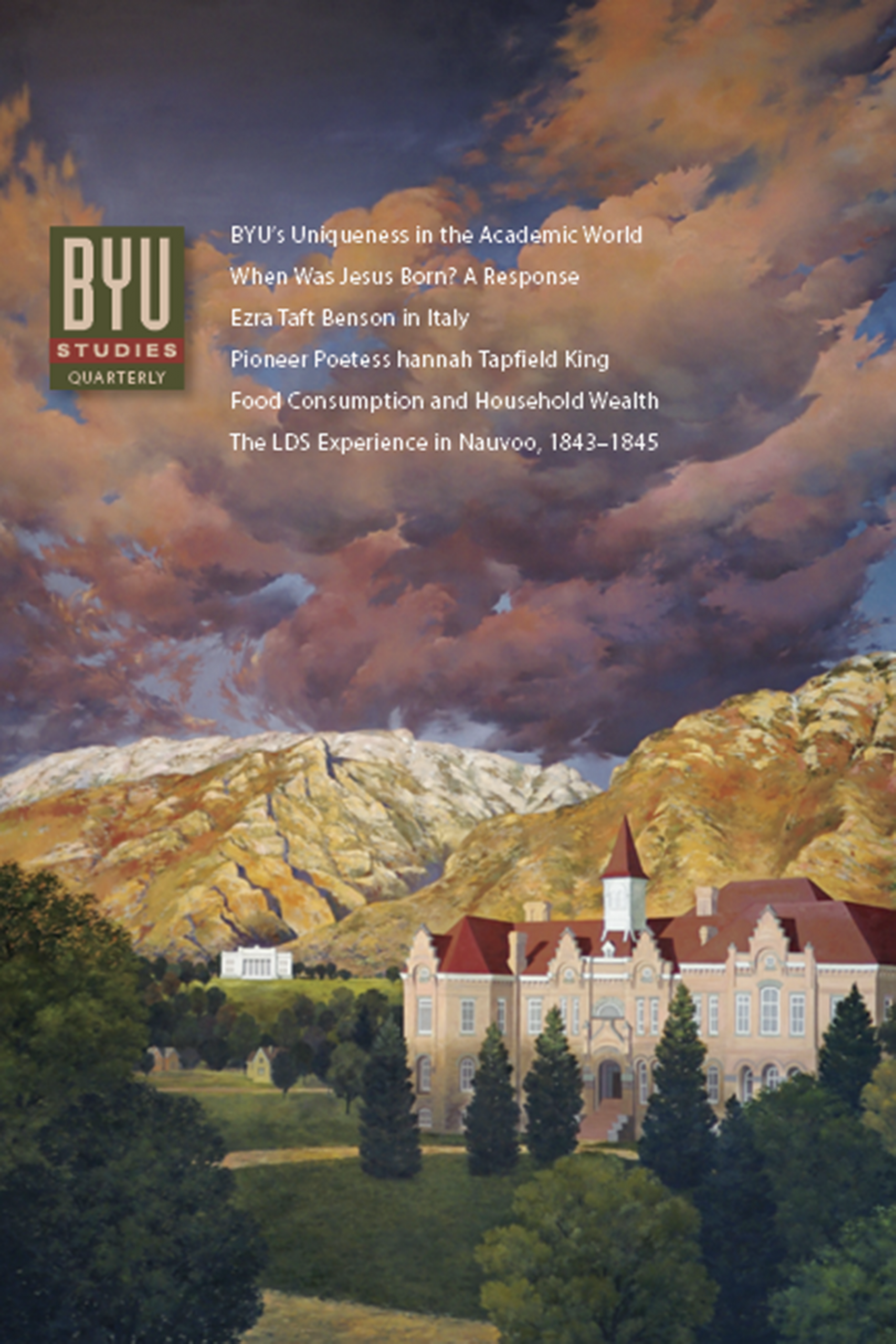Parallels and Convergences
Mormon Thought and Engineering Vision
Book Notice
Parallels and Convergences: Mormon Thought and Engineering Vision, edited by A. Scott Howe and Richard L. Bushman (Draper, Utah: Greg Kofford Books, 2012).
The essays contained in this text grew from an initial discussion between Richard L. Bushman and NASA engineer A. Scott Howe, a discussion that delved into the ways theology and engineering converge. That conversation led to a subsequent meeting, which was held at Claremont Graduate University in March 2009. There, LDS engineers from a variety of technical backgrounds representing such fields as computer programming, physics, and artificial intelligence presented their views relating to modern scripture and its harmony with science. Though at times the language contains some technical terms, the articles provide insight into general areas of faith that are also inviting to the nontechnical reader.
The introduction by Terryl L. Givens is both informative and masterfully written and outlines the contrasts between traditional Christianity and the revelations in our time. While traditional theology focuses on the time between the Fall and the Redemption, Mormon theology stretches beyond the Creation and extends after the Resurrection of Christ. Givens touches on modern-day teachings, including the ideas espoused by Parley P. Pratt and by the Prophet Joseph Smith in his well-known King Follet discourse. Givens beautifully expands upon the limited views of traditional Christian orthodoxy to the new understanding revealed in this dispensation by the Prophet Joseph Smith—truths about divinity, the human soul, and our eternal potential.
The remainder of the book is organized into three sections of essays: (1) Parallels in Mormon Thought: Physics and Engineering; (2) Parallels in Mormon Thought: Philosophy and Engineering; and (3) Parallels in Mormon Thought: Practice and Engineering.
The first section ponders the possibilities for convergence between modern revelations and theological models describing the essence of spirit. The essays examine the subject in terms of spirit as matter, spirit bodies, the locality of spirits, and the interaction of physical and spiritual realms. The idea of light as the equivalent of spirit, as well as the idea of truth as light, is given thoughtful and faithful consideration. Aspects of materialism, Mormon thought, and free will are presented, including parallels to the modern technical world.
The second section focuses on engineering and philosophy, pondering such topics as the postulate that God is the perfect engineer who works within existing natural law. A treatment on transhumanism is included, which touches on our future in a world of expansive technology and our capabilities in a millennial era. Finally, a discussion of morality, armed with a scientific view, is presented in terms of decision trees and the entropy of the universe. The question is presented and explored, “With such risks and opportunities at hand, what shall we do?”
The final section deals with views concerning the evolution of the earth into a millennial state and how that evolution relates to the earthly experience God has designed for us. The concept that the earth is a living organism progressing toward a paradisiacal state is explored, as is our role as agents in that evolution. The possibilities of divine inspiration in the space program are pondered, including such issues as the existence of life on other planets.
The final essay welcomes us into the twenty-first century with a brief summary of the breathtaking advances of the past fifty years and the directions and trends of current technology; it then points out the challenges we face in the future. The essay concludes with the revealed thoughts on the law of progression, not only during the millennial period but throughout eternity: “‘We believe all that God has revealed, all that He does now reveal, and we believe that He will yet reveal many great and important things pertaining to the Kingdom of God,’ states the Ninth Article of Faith. This language is strikingly similar to the definition of the idea of progress as given by Robert Nisbet: ‘Mankind has advanced in the past, . . . is now advancing, and will continue to advance through the foreseeable future’” (171).
Notes
- BYU and Religious Universities in a Secular Academic World
- When Was Jesus Born?: A Response to a Recent Proposal
- The LDS Church in Italy: The 1966 Rededication by Elder Ezra Taft Benson
- “As a Bird Sings”: Hannah Tapfield King, Poetess and Pioneer
- Engel’s Law
- Nauvoo Neighbor: The Latter-day Saint Experience at the Mississippi River, 1843–1845
Articles
- The Heresy of Orthodoxy: How Contemporary Culture’s Fascination with Diversity Has Reshaped Our Understanding of Early Christianity
- Still, the Small Voice: Narrative, Personal Revelation, and the Mormon Folk Tradition
- Early Mormon Missionary Activities in Japan, 1901–1924
- Compromising Scholarship: Religious and Political Bias in American Higher Education
- Three works of literary fiction
Reviews
- Within These Prison Walls: Lorenzo Snow’s Record Book, 1886–1897
- Parallels and Convergences: Mormon Thought and Engineering Vision
Book Notices
Purchase this Issue
Share This Article With Someone
Share This Article With Someone


